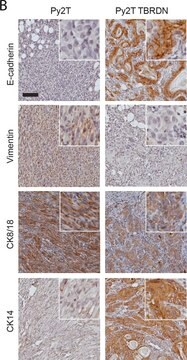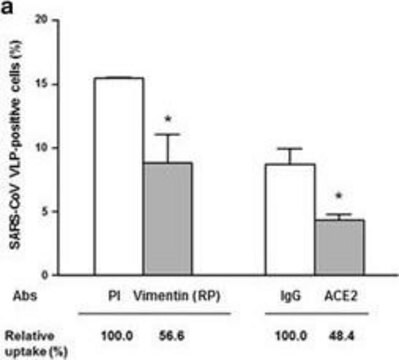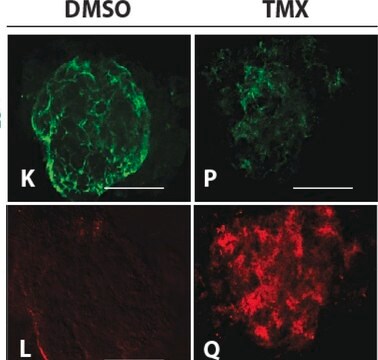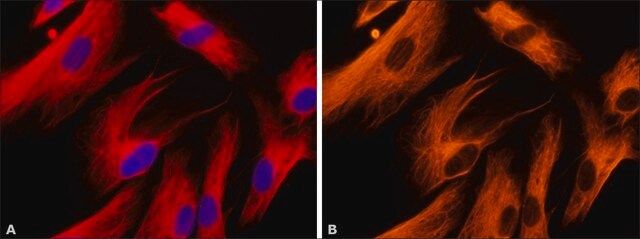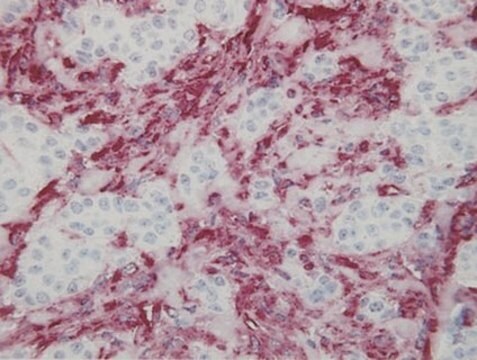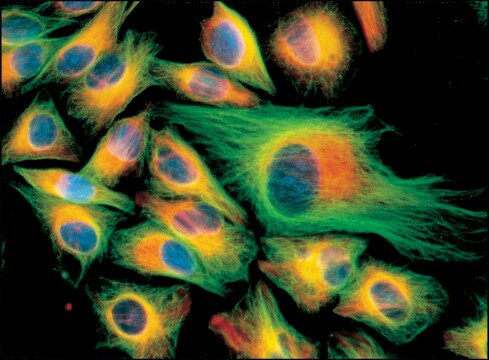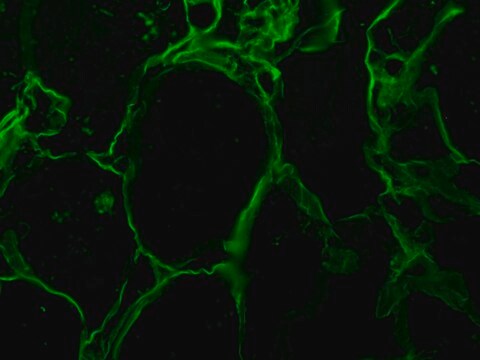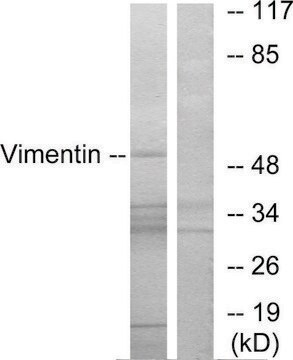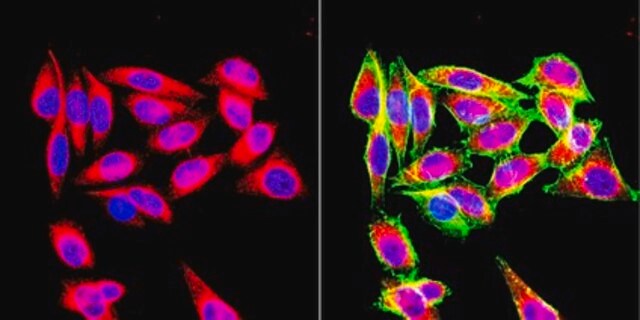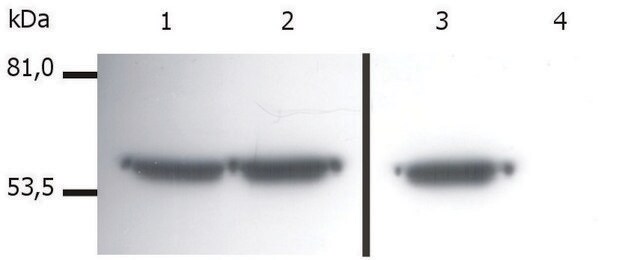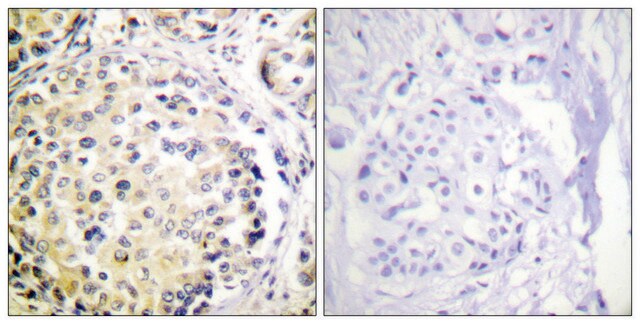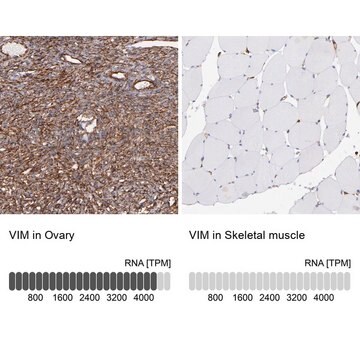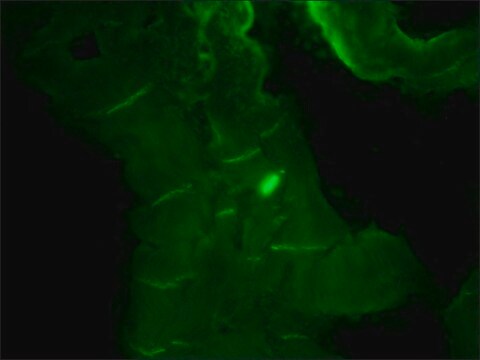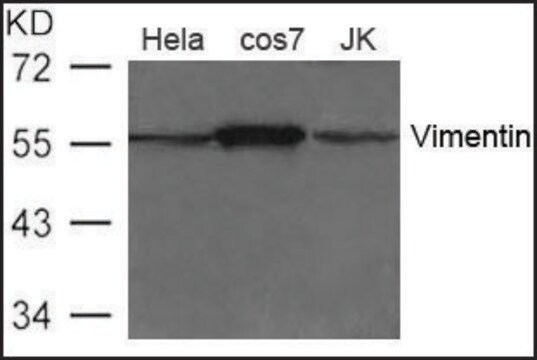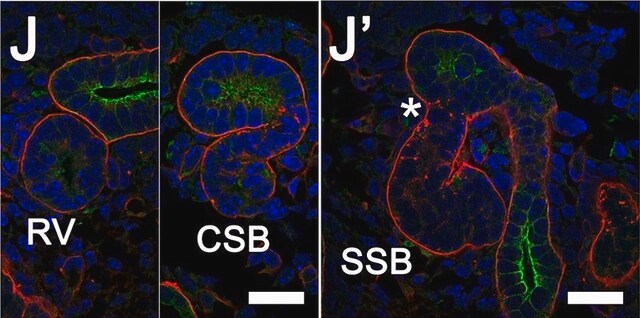V6630
Monoclonal Anti-Vimentin antibody produced in mouse
clone V9, ascites fluid
Sinónimos:
Monoclonal Anti-Vimentin
About This Item
Productos recomendados
origen biológico
mouse
Nivel de calidad
conjugado
unconjugated
forma del anticuerpo
ascites fluid
tipo de anticuerpo
primary antibodies
clon
V9, monoclonal
mol peso
antigen ~58 kDa
contiene
15 mM sodium azide
reactividad de especies
pig, canine, feline, hamster, rabbit, gerbil, monkey, bovine, chicken, human, horse, rat
técnicas
immunohistochemistry (formalin-fixed, paraffin-embedded sections): 1:40 using human tissue
western blot: 1:200 using human fibroblasts HS-68
isotipo
IgG1
Nº de acceso UniProt
Condiciones de envío
dry ice
temp. de almacenamiento
−20°C
modificación del objetivo postraduccional
unmodified
Información sobre el gen
human ... VIM(7431)
rat ... Vim(81818)
¿Está buscando productos similares? Visita Guía de comparación de productos
Descripción general
Especificidad
Inmunógeno
Aplicación
- in immunofluorescence Analysis
- in western blot
- anti-vimentin antibody is injected into mature oocytes before embryo manipulations to bind endogenous vimentin (VIM)
- in immunocytochemistry
Acciones bioquímicas o fisiológicas
Almacenamiento y estabilidad
Otras notas
V6389 Anti-Vimentin antibody, Mouse monoclonal
clone V9, purified from hybridoma cell culture
Cláusula de descargo de responsabilidad
¿No encuentra el producto adecuado?
Pruebe nuestro Herramienta de selección de productos.
Opcional
Producto relacionado
Código de clase de almacenamiento
12 - Non Combustible Liquids
Clase de riesgo para el agua (WGK)
nwg
Punto de inflamabilidad (°F)
Not applicable
Punto de inflamabilidad (°C)
Not applicable
Certificados de análisis (COA)
Busque Certificados de análisis (COA) introduciendo el número de lote del producto. Los números de lote se encuentran en la etiqueta del producto después de las palabras «Lot» o «Batch»
¿Ya tiene este producto?
Encuentre la documentación para los productos que ha comprado recientemente en la Biblioteca de documentos.
Los clientes también vieron
Artículos
High titer lentiviral particles including beta-actin, alpha-tubulin and vimentin used for live cell analysis of cytoskeleton structure proteins.
Nuestro equipo de científicos tiene experiencia en todas las áreas de investigación: Ciencias de la vida, Ciencia de los materiales, Síntesis química, Cromatografía, Analítica y muchas otras.
Póngase en contacto con el Servicio técnico
